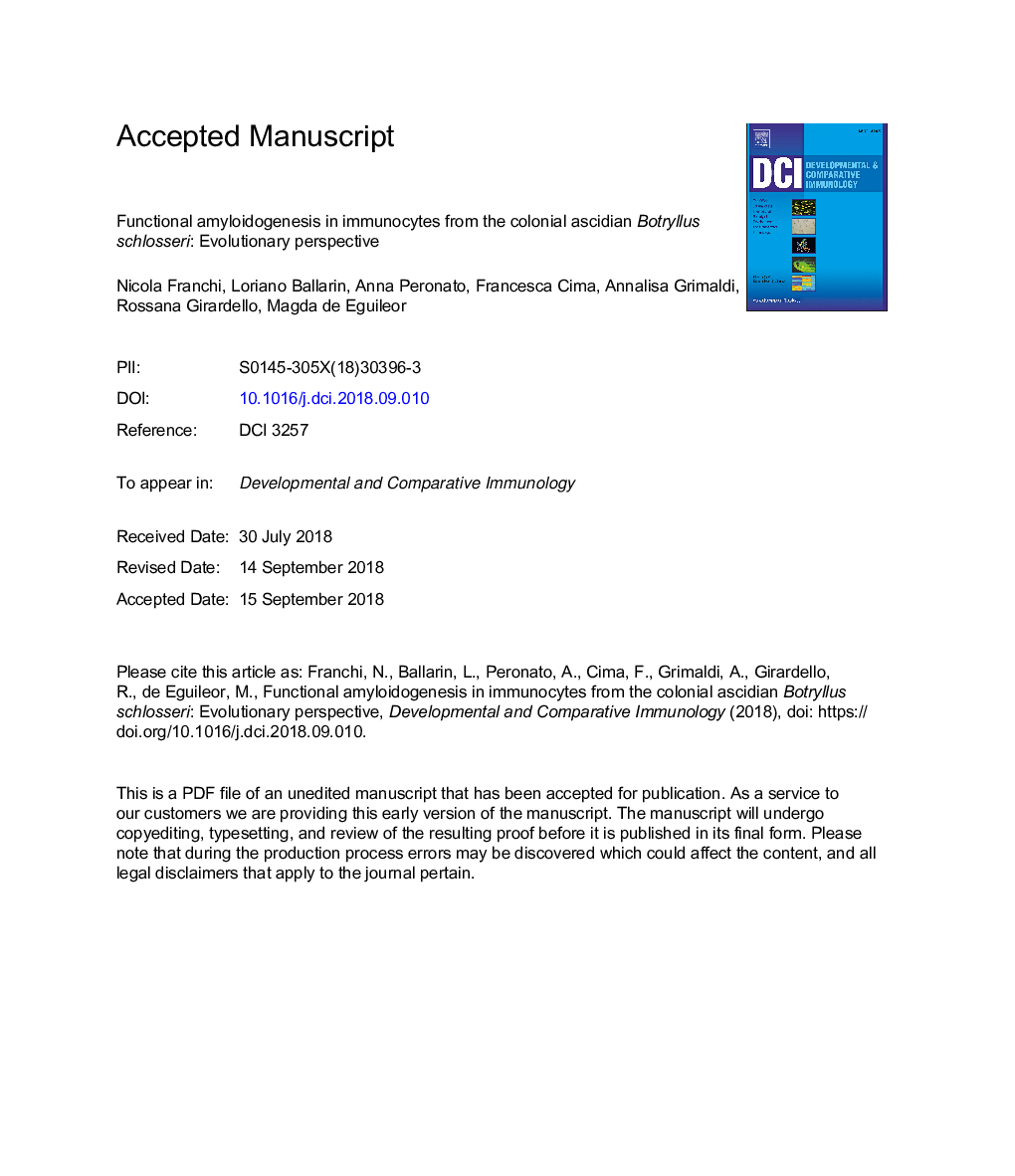| Article ID | Journal | Published Year | Pages | File Type |
|---|---|---|---|---|
| 11030783 | Developmental & Comparative Immunology | 2019 | 38 Pages |
Abstract
Cytotoxic morula cells (MCs) and phagocytes are the circulating immunocytes of the colonial ascidian Botryllus schlosseri: Both these cells can synthesise amyloid fibrils, supporting the idea that physiological amyloidogenesis is involved in inflammation and modulation of immune responses. Intriguingly, amyloid of B. schlosseri immunocytes is made of two different proteins. MCs, the first cells to sense non-self and involved in the allorejection reaction between contacting genetically incompatible colonies, use melanin encapsulation as the principal method to fight non-self. They release amyloid fibrils formed by p102 protein that allow the packaging and deposit of melanin and other toxic molecules nearby the invader or in the contact region of incompatible colonies. Phagocytes release amyloid-based extracellular traps when challenged with microbes: their amyloid fibrils harbour BsAPP, an orthologue of the vertebrate amyloidogeneic protein APP. This strategy of immune response, present also in human neutrophils, allows phagocytes to block and engulf bacteria and fungi.
Related Topics
Life Sciences
Biochemistry, Genetics and Molecular Biology
Developmental Biology
Authors
Nicola Franchi, Loriano Ballarin, Anna Peronato, Francesca Cima, Annalisa Grimaldi, Rossana Girardello, Magda de Eguileor,
